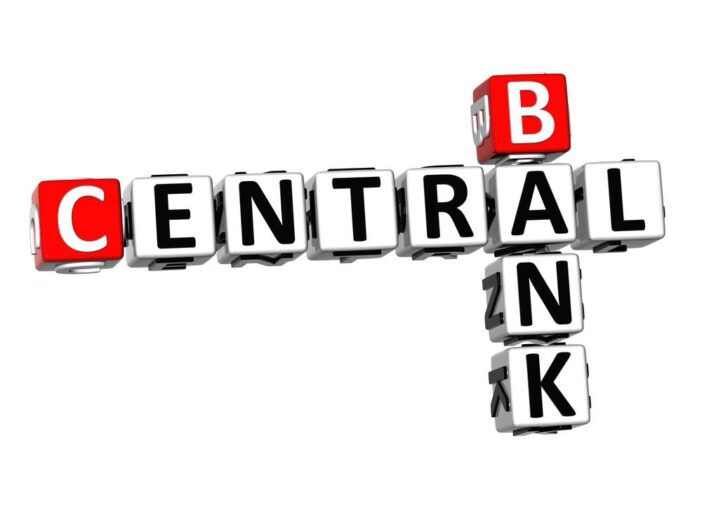The corner that central bankers have painted themselves into is getting mighty small now. And the potential consequences for investors are getting ever more extreme. Today, we explore the trade-off which central bankers face. The impossible choice they have to make about your financial future.
On the one side is inflation. Rising prices wreak havoc on the economy in a long list of ways. With wages lagging behind price increases, I don’t need to elaborate on that too much.
The solution to inflation is, of course, tighter monetary policy. Which is patently absurd if you think about it. I mean, in what sense is increasing the cost of living a solution to a rising cost of living? How does adding more in interest expenses help reduce the burden of high prices? It makes the problem worse, not better.
This is doubly true because the inflation we’ve seen is largely coming from supply shocks, not demand spikes. Higher interest rates only work when inflation is caused by excess demand.
And hiking interest rates on companies that use debt to finance their inventory means these companies pass on those higher costs to consumers, further raising prices.
The only way in which higher interest rates actually bring down inflation is by way of less lending and less spending. But these changes take a very long time to impact the economy. Especially when it wasn’t lending and spending that was the problem to start with.
According to the Reserve Bank of Australia’s own research, ‘the average length of the monetary policy lag is 6.4 quarters; for the headline model, it is a slightly smaller 5.8 quarters’. So we’re talking 18 months.
Given the RBA began its hiking cycle in May 2022, we’ve got another six months or so to wait before monetary policy starts working at all. And only then, in theory.
Great.
The trouble with banking crises is that they’re extremely deflationary because they reduce the money supply as multiplied by the banking system. You see, each time a bank makes a loan, they create the money. They literally loan the money into existence. Just as the money you spend on your credit card is created when you spend it.
So, when the banking system stutters, less money is created. And that’s very bad for the economy and money supply.
Central banks are responsible for keeping the banking system liquid to prevent banking crises. The trouble is, they must create money to do this. Which is inflationary.
The debate about whether the US Federal Reserve’s latest bank rescue package amounts to QE (quantitative easing) or not is beside the point. The central bank’s balance sheet has ballooned by hundreds of billions already. That’s inflationary.
In a thinly veiled signal to the market, the new lending program was given a name with the acronym BTFP, which sounds unsurprisingly similar to the irrationally exuberant market mantra BTFD, meaning Buy the F***ing Dip…
But it hasn’t worked, with markets whipsawing since the launch of the BTFP program. And rightly so, with the Fed deciding to increase interest rates this week.
My question to you is: Which would you choose? A banking crisis or an inflation crisis?
More specifically, if you were a central banker today, would you hike rates and risk causing a financial crisis? Or would you pause rate hikes, or even cut rates, risking an inflation crisis?
Let me know here, along with your permission to publish your answer under your initials: support@fattail.com.au.
Keep in mind, by the way, that the world of central banking as we know it is quite new. New Zealand invented inflation targeting in 1990. Historically speaking, the primary purpose of central banks was to protect the banking system and the government debt markets. So, I’d argue that it’s a lot less clear what central bankers should be doing than ‘just focus on inflation as it says in your bloody mandate, you fools!’.
It’s easy to blame central bankers for the situation they’re in we’re in. They did, of course, cause both problems — inflation and the banking crisis.
They caused inflation with loose monetary policy, ignored inflation when it began, promised they wouldn’t hike rates to fight inflation, and then did precisely what they promised not to do, in spectacular fashion.
This left us with high inflation. But it also left us with crashing government bond prices. After all, higher interest rates make bond prices fall. And it’s those falling bond prices that created the fragility of the banking system because it imposed losses on their large holdings of those bonds.
You might also argue that central bankers were responsible for creating the bank regulatory environment that encouraged holding so many (or is it too many?) government bonds in the first place. They helped shape the Basel II framework, in other words.
And you can blame US central bankers for their poor management of the banking crisis once it started too. Working together with their mates in government, they allowed some banks to fail, insured some bank deposits but not others, and kept changing their mind about policies. This risks an outlet for the banking crisis to continue by — small banks that won’t be rescued.
In Europe, central bankers introduced a great deal of confusion over convertible bonds, again part of the Basel II framework. This risks another way the banking crisis could continue. ‘Who Is Stuck With Credit Suisse’s Worthless AT1 Bonds?’ asks Bloomberg. The answer is not so helpful: ‘[…] the owners of the bulk of the $17 billion of these highly risky instruments remain a mystery’.
Uh oh…
So perhaps we really should just blame central bankers? Perhaps there’s no ‘but’ to that claim?
Actually, the ‘but’ is that you have to figure out what to do about all this. Just as 2022 exposed, by causing simultaneous meltdowns in both stocks and bonds — which wasn’t supposed to happen — perhaps the next few years will continue to upend investment mantras.
For example, passive investing might fail as stock indices stop going up in the long run — which they already have in much of the world.
Perhaps bonds don’t belong in a portfolio as a derisk option when inflation is high because they don’t diversify risk?
Perhaps the prospect of further bailouts means there’s an actual risk of a sovereign debt crisis, which means sovereign bonds are risky, not risk-free as presumed.
In other words, perhaps the investment world’s assumptions need to radically change…
That’s why, next week, Fat Tail Investment Research will be presenting you with our top escape route out of this monetary madness. It’ll focus on a specific type of opportunity that is almost the antidote to what you currently read about in the ‘finance’ section of the newspaper.
A world which can’t be fudged, where bailouts don’t feature, and companies do something that is clearly and unambiguously useful to you and me.
Which is more than we can say for central banks…
You can get more details and secure your spot to next week’s event — ‘Graduation Day’ — by clicking here.
Until next time,
 |
Nickolai Hubble,
Editor, The Daily Reckoning Australia Weekend

